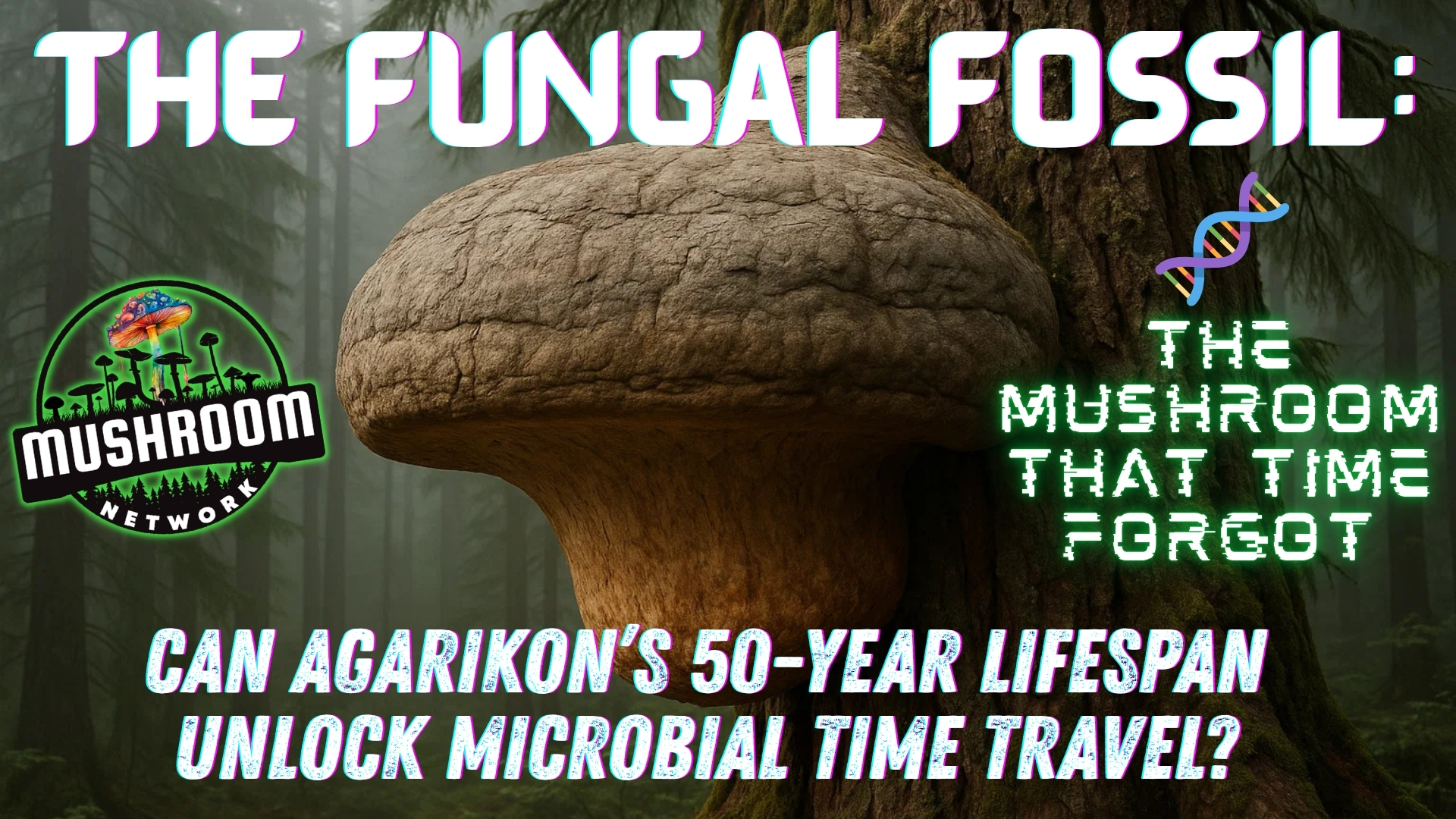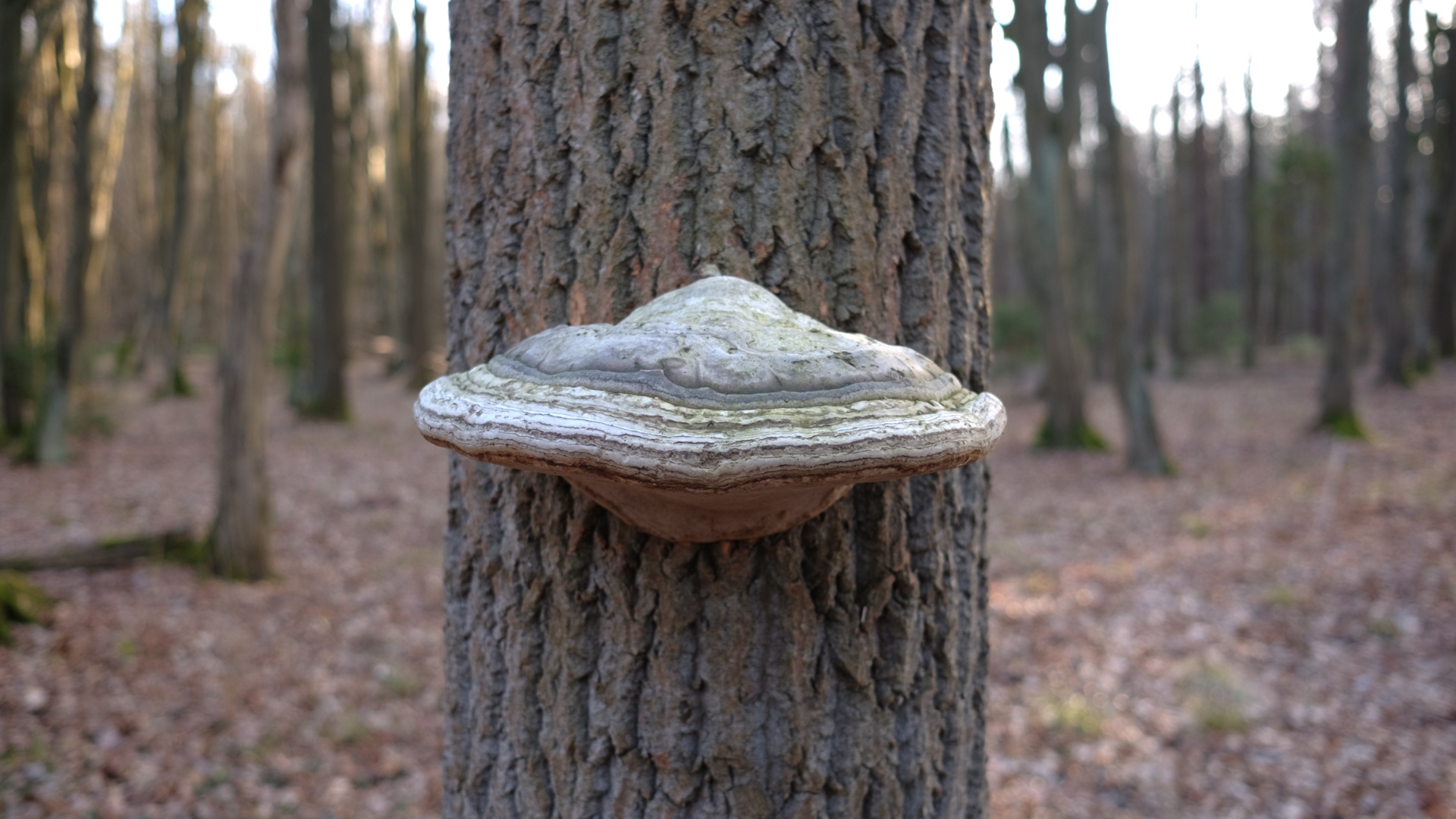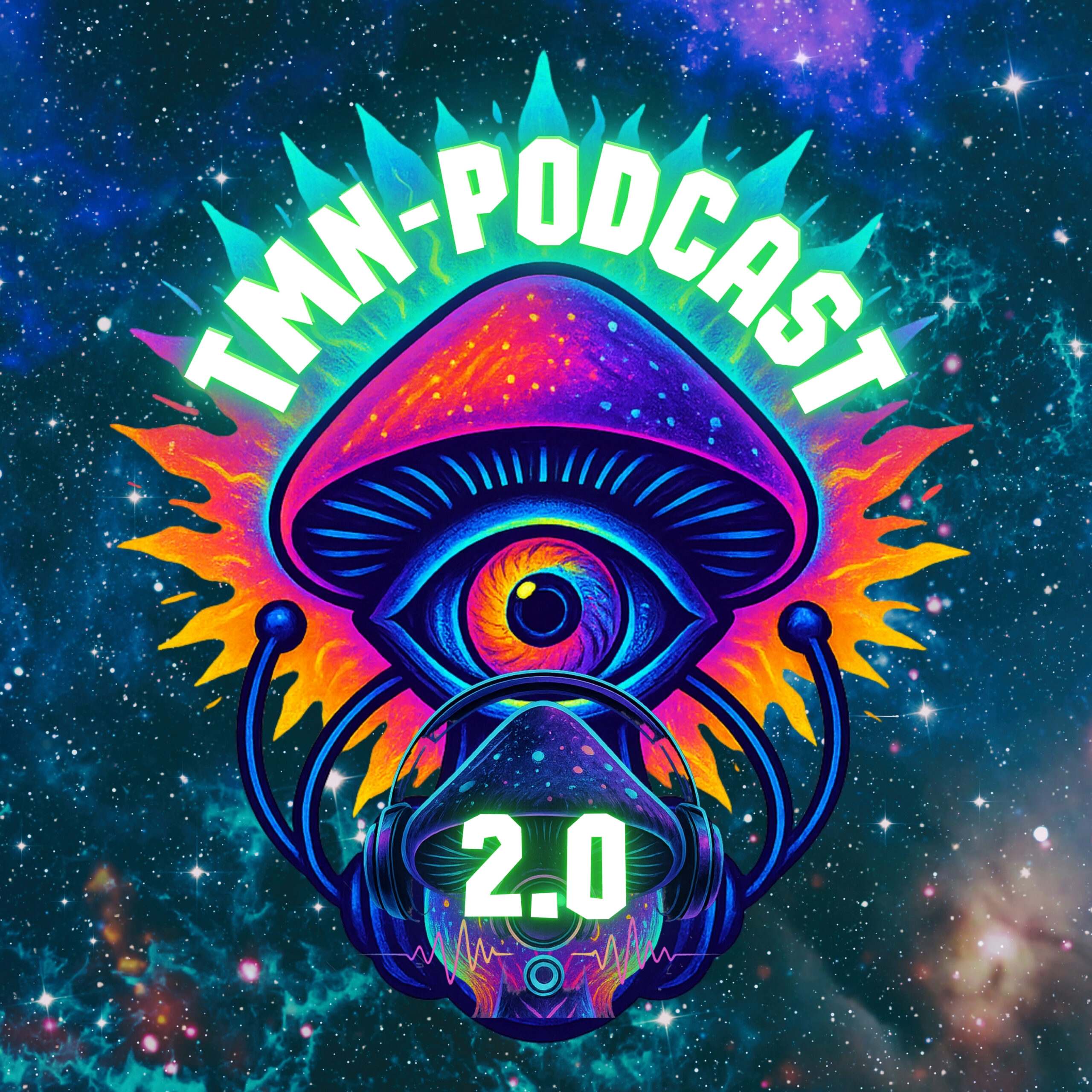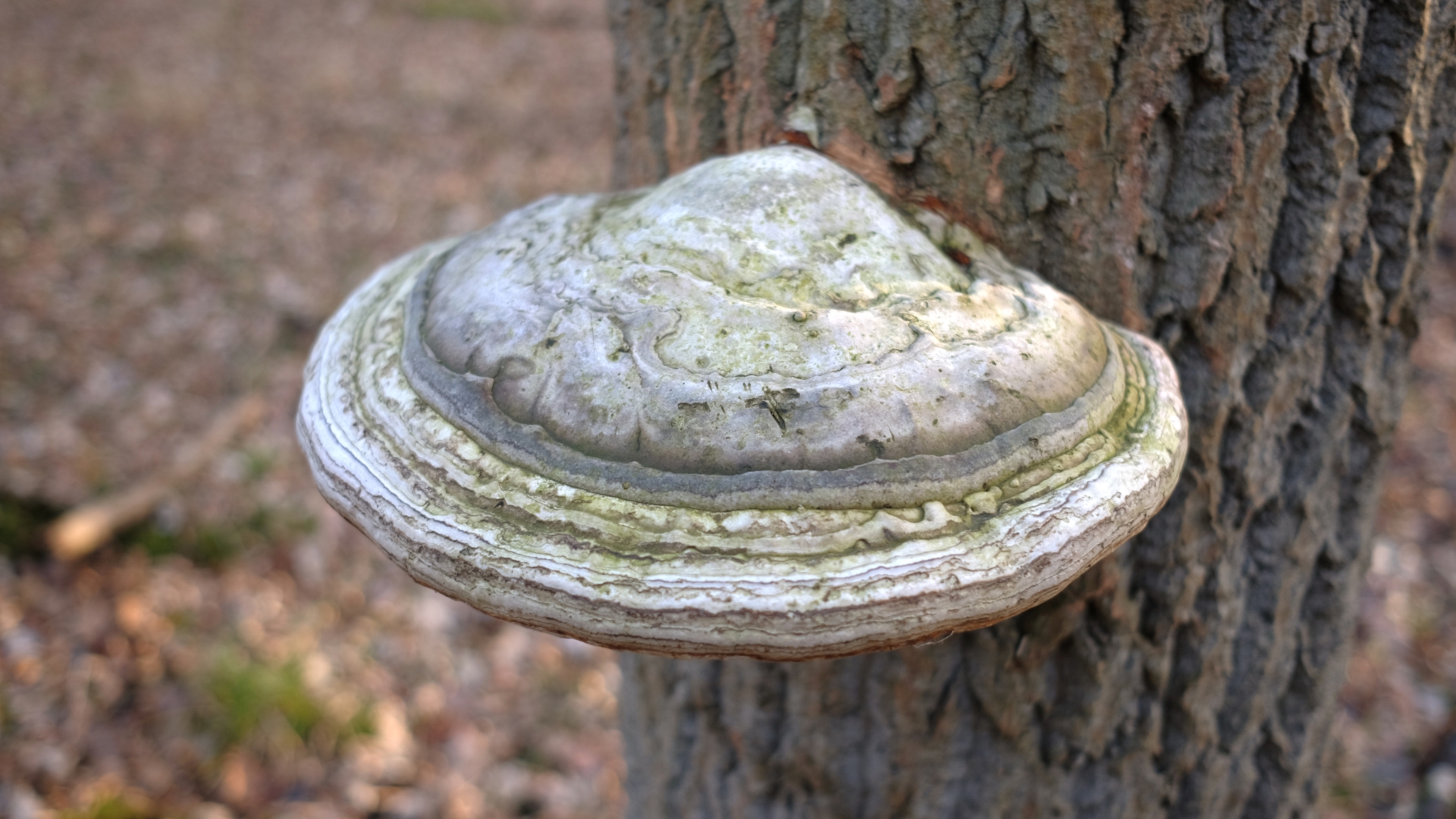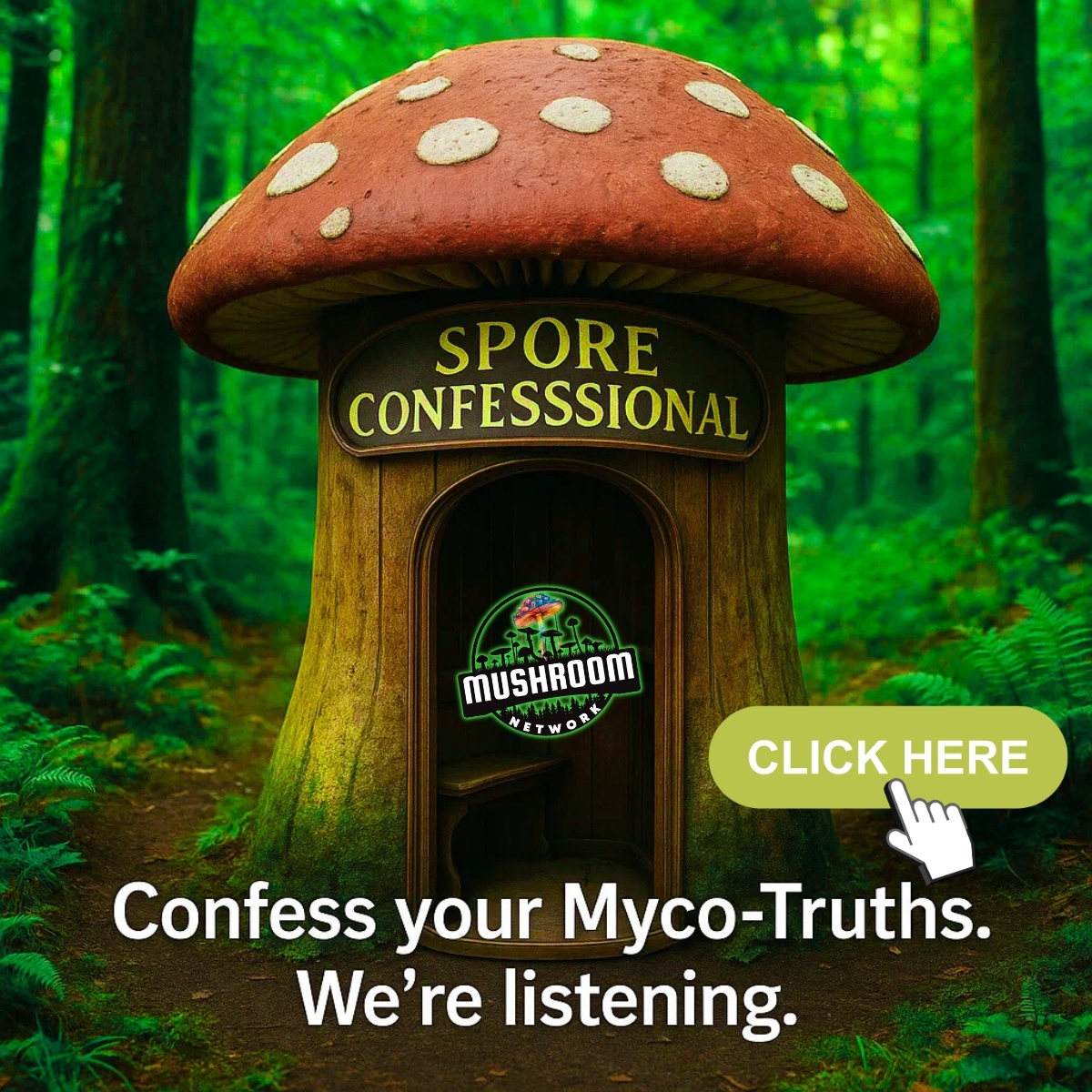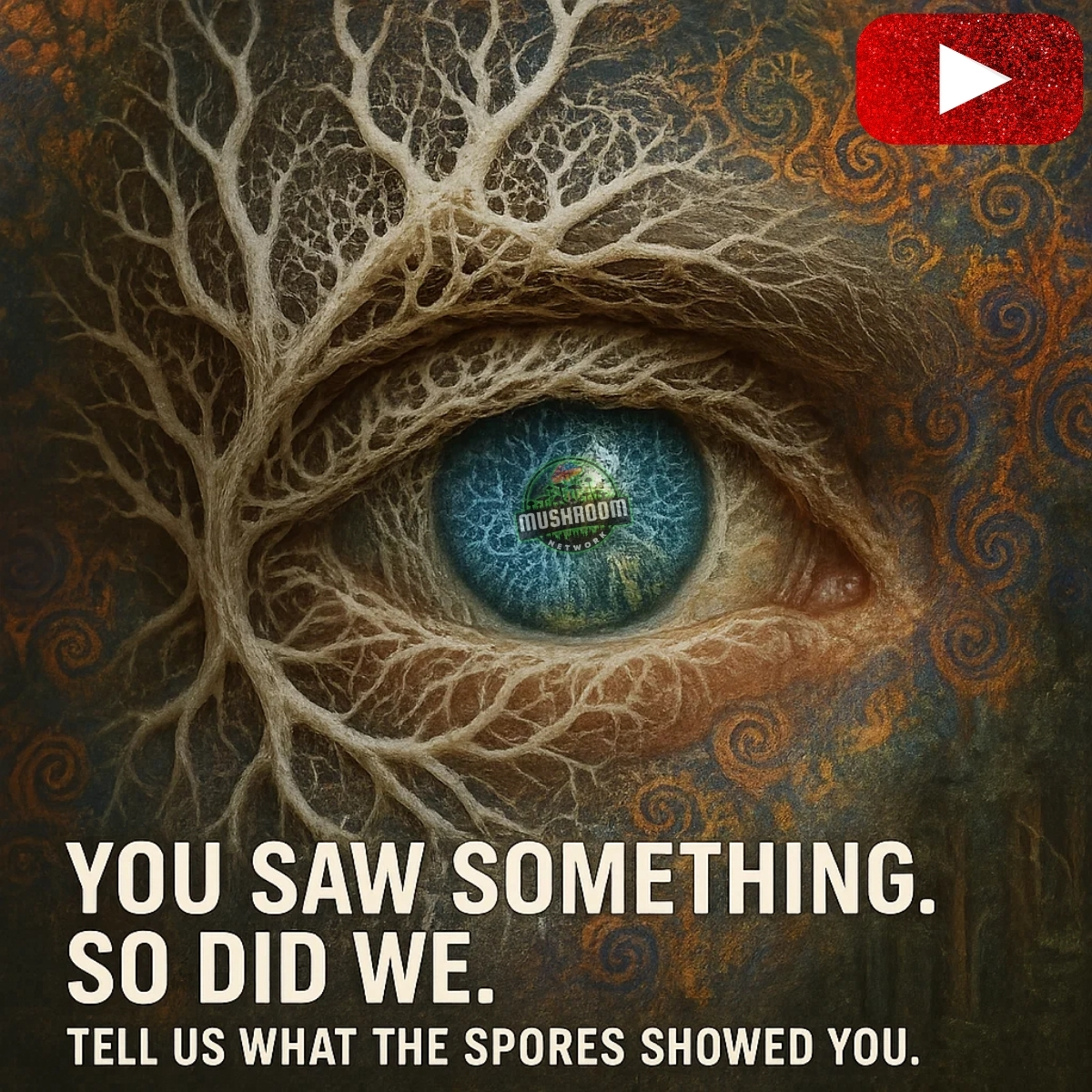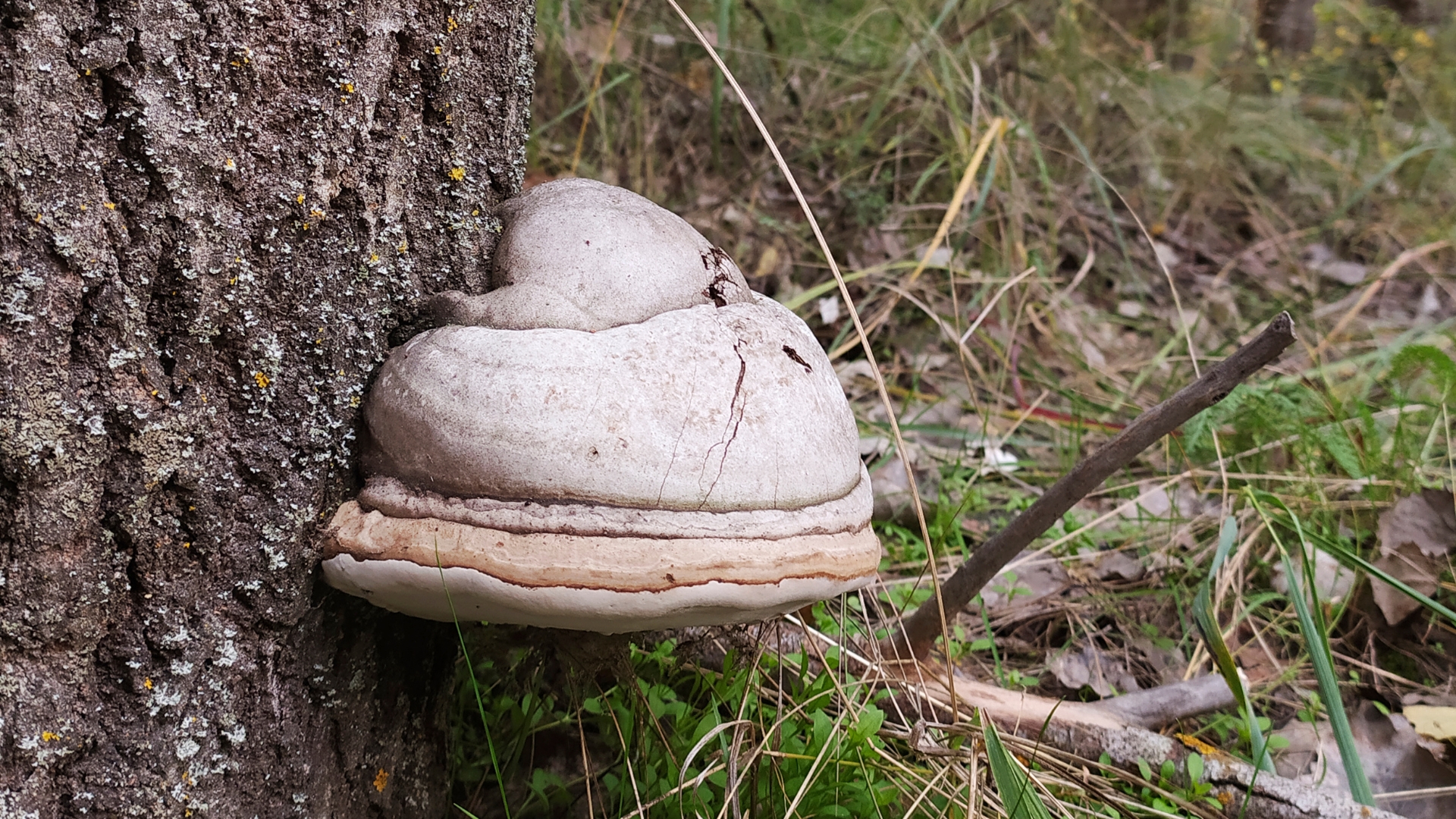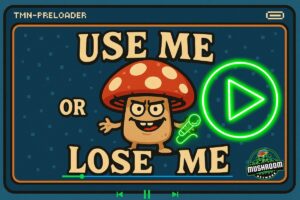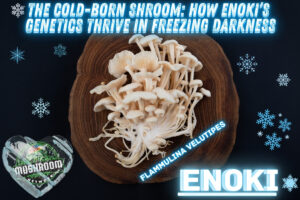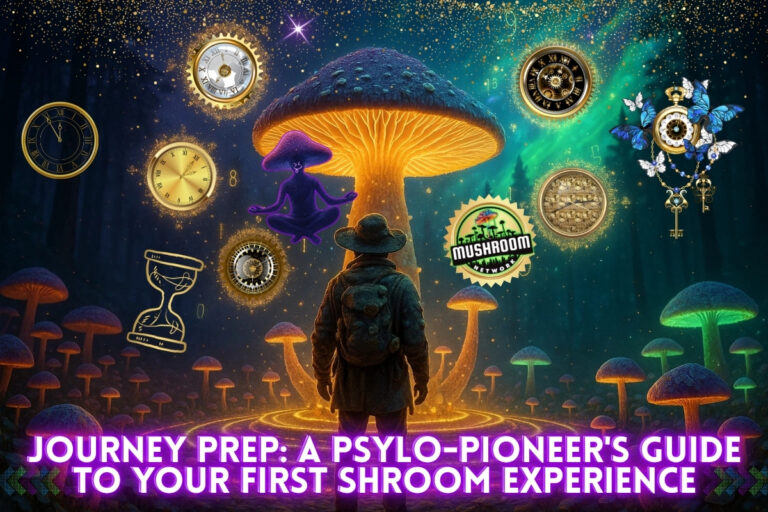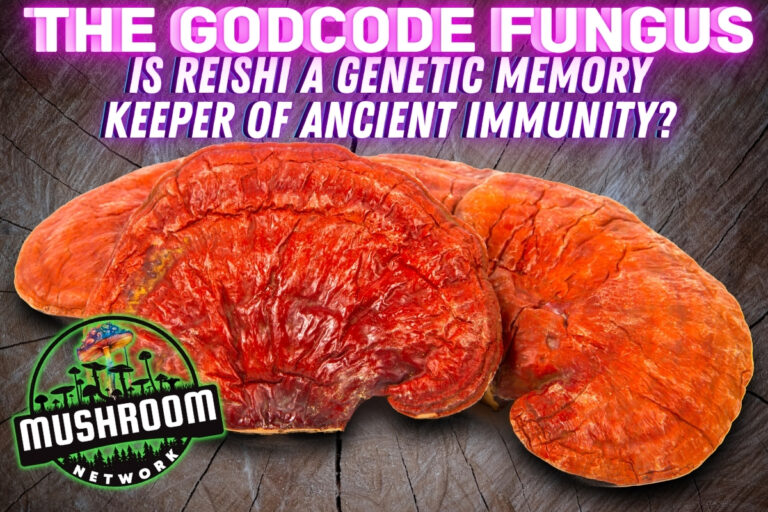⏳ The Fungal Fossil: Can Agarikon’s 50-Year Lifespan Unlock Microbial Time Travel?
With a lifespan longer than some mammals, this spore-sage may carry genetic memory from pandemics past.
What if the cure to tomorrow’s viral outbreak was written into a mushroom that’s been growing since the ’70s? Enter Agarikon (Fomitopsis officinalis)—the long-living shelf fungus once used to treat plague symptoms and now being researched for its powerful antiviral genetics. From its towering, beehive-like form to its decades-long growth on ancient conifers, Agarikon might just be the fungal equivalent of a microbial time machine. Open the vault.
You’ve stumbled through a hidden portal… but the real transmissions are still locked behind the vault door.
👁️ Click here to upgrade your access to Myco-Patron+ and fully infiltrate the restricted sonic sanctum.
Just... don’t tell the AI-fungi in Sector 8.
You’ve found the doorway—but haven’t stepped fully through.
The Temple only reveals its true sound to the fully initiated.
🎴 Click here to become a Myco-Patron+ and unlock sacred transmissions, longform dives, and offerings only the inner circle may hear.
The spores chose you for a reason.
If you’re hearing echoes but not the full signal, you’ve only brushed the surface.
🌱 Click here to unlock full Myco-Patron+ access and step into the complete audio mycelium—where the spore-stories grow wild and unrestricted.
You’ve found the doorway—but haven’t stepped fully through.
The Temple only reveals its true sound to the fully initiated.
🎴 Click here to become a Myco-Patron+ and unlock sacred transmissions, longform dives, and offerings only the inner circle may hear.
You’ve found the doorway—but haven’t stepped fully through.
The Temple only reveals its true sound to the fully initiated.
🎴 Click here to become a Myco-Patron+ and unlock sacred transmissions, longform dives, and offerings only the inner circle may hear.
🪵 Spores from the Past, Codes for the Future
Imagine a mushroom so patient, it takes decades to mature. Not days. Not months. Decades. Agarikon (Fomitopsis officinalis) is a living fossil—an ancient polypore that grows on old-growth conifers in the Pacific Northwest and parts of Eastern Europe. Historically revered as a treatment for lung ailments and even the Black Plague, this fungal titan isn’t just a relic. It’s a biochemical librarian.
Modern mycologists are now exploring Agarikon for its potent antiviral potential, including compounds that may disrupt the replication of viruses like influenza, herpes, and even novel coronaviruses. But it’s more than what it fights—it’s how it grows. Agarikon’s 50-year lifecycle may encode patterns of microbial resistance, forest chemical signatures, and pathogen history across centuries. And like the rings of a tree, each year of growth could be a line in the immune saga of the forest.
🦠 Antiviral Archives: Agarikon vs. the Microbial Legion
What happens when a 50-year-old fungal fortress faces off with the viral villains of every age? A biochemical saga unfolds.
💀 From Plague Tonic to Lab Darling—A Mushroom that Saw the Black Death and Lived to Tell the Tale
Long before Petri dishes and PhDs, there was Agarikon (Fomitopsis officinalis), dangling like ghostly beehives from old-growth conifers, whispering its secrets to those who listened. Indigenous North American tribes, including the Haida and Coast Salish, revered it as sacred lung medicine. Across the Atlantic, European healers steeped it in plague-fighting brews and smudging rituals when the air was thick with death.
Whether burned to fumigate or brewed to soothe, Agarikon was no ordinary shroom—it was bio-defense grown from the bark of the divine. In the absence of antibiotics, it became the spore-based firewall against infection. And now? Modern science is finally catching up to what the trees already knew.
🔬 Lab Results That Raise Eyebrows (and Microscopes)
Welcome to the 21st century, where Agarikon is no longer just forest folklore—it’s a lab superstar with a glowing resume of pathogen takedowns. In vitro studies have revealed Agarikon extracts showing antiviral activity against a literal pantheon of microbial misfits: H1N1 influenza, cowpox, vaccinia, HSV-1 and HSV-2, even the gnarly cousins of SARS.
This mushroom isn’t just flexing one compound—it’s wielding a multidimensional immune strategy. Scientists suspect its mycelial repertoire includes novel antiviral agents the pharmaceutical world hasn’t even mapped yet. Imagine a fungal filing cabinet filled with medieval medical scrolls and futuristic biochemical blueprints—sealed inside a single conk that grows for decades on old trees.
Basically, it’s Gandalf the Grey of medicinal mushrooms: ancient, powerful, and still full of tricks.
🎷 Multi-Compound Complexity—A Mycelial Jazz Ensemble in the Microbial Warzone
Forget the “one-drug-one-target” pharmaceutical model. Agarikon doesn’t play solo—it conducts a molecular symphony. Its antiviral and antimicrobial activity seems to arise not from one star molecule, but from a jam session of triterpenoids, polysaccharides, sesquiterpenes, and aromatic acids, riffing in biochemical harmony.
This is fungal polyphony. While the flu virus tries to slip past your immune gates, Agarikon responds with layered improvisations—some soothing, some shredding. Triterpenoids puncture viral membranes like drum kicks. Beta-glucans cue immune cells with psychedelic trumpet flair. Phenolic acids swirl in, dampening the inflammation crescendo.
It’s not a silver bullet. It’s jazz warfare. And the solo never ends—because Agarikon’s repertoire evolves with the forest, adapting like a living immune operating system.
🪐 Is This Fungus Logging the History of Microbial Earth?
When a mushroom lives for 75 years, what stories does it store in its spores?
🌲 The Methuselah of Mushrooms—Fungal Elder of the Myco-Verses
Most mushrooms burn bright and fast—pop up after a rain, spore party for a day, and disappear by breakfast. But not Agarikon. This ancient conk is a slow-growth sentinel, clinging to the sides of conifer giants for up to 75 years. That’s not just long in mushroom years—it’s straight-up elder-level.
While the forest breathes, burns, floods, and shifts, Agarikon stays rooted. Observing. Responding. Absorbing. And like a tree carving memories into its rings, Agarikon records a living molecular journal across decades.
Every environmental insult—every smoke-filled season, every microbial siege—is etched into its biochemistry like a fungal black box. This isn’t a mushroom. It’s an ecological historian shaped like a conk and coded in triterpenes.
🌀 Spore Rings of Time—Reading the Fungal Fossil Clock
You’ve heard of dendrochronology, where tree rings tell tales of drought, fire, and flood. Now imagine mycochronology—reading the biochemical spirals of Agarikon to uncover the drama of microbial Earth.
Each growth layer in Agarikon contains a snapshot of that year’s metabolic responses. Pathogen encounters? Logged. Climatic stress? Encoded. Symbiotic deals with host trees? Archived. The metabolome—Agarikon’s chemical fingerprint—shifts with each passing solar cycle.
Scientists are now slicing conks like fungal geodes, studying their internal layers to search for viral markers, microbial residues, and stress signatures. What emerges is a time-lapse reel of bio-defense strategies—coded in natural molecules instead of silicon.
It’s like unlocking ancient fungal scrolls… only they’re not written in ink, they’re carved in chemistry.
🔍 Myco-Forensics—Spores as Historians, Mushrooms as Memory Drives
What if we could decode each phase of Agarikon’s long life the way we analyze ice cores or sediment layers? What if inside this gnarly growth are microbial time capsules—offering glimpses into pandemics past, environmental traumas, and evolutionary duels?
Imagine mapping viral outbreaks across centuries using conk chemistry. Reconstructing ancient immune strategies from fungi that fought—and survived—airborne assassins before antibiotics existed. That’s not just medicine. That’s biological archeology.
This is Myco-Forensics. And Agarikon might be the ultimate witness—its mycelium a scribal network, its fruiting body a biochemical logbook. Not just storing data… but living it.
In a world fraying from climate chaos and mutating pathogens, Agarikon could help us peer backward to see what worked—and why. It’s microbial time travel, coded in cellulose and spore memory.
So next time you see a giant conk hanging from a forest elder, don’t just think “mushroom.”
Think planetary backup drive.
🧬 When Folk Wisdom Matches Gene Sequencing
What if the forest knew all along—and science is just now catching up?
🌲 The Tree-Fungus Pact—Biochemical Brotherhood of the Old Growth
Agarikon doesn’t fruit just anywhere. It’s a fungal diva with ancient standards—only appearing on towering elders like Douglas fir and larch, trees that have stood for centuries with roots like memory conduits. This exclusivity isn’t snobbery. It’s strategy.
Research shows that Agarikon’s metabolism is intimately tied to its arboreal host. When the tree is under stress—be it fire, fungal competition, or drought—the conk responds, genetically, by ramping up specific chemical defenses. It’s like the tree taps Agarikon on the shoulder and whispers, “We’ve got a situation,” and the fungus responds by brewing molecular reinforcements.
This is not a parasite. This is a biological alliance, forged across evolutionary epochs. Fungal genes activate in tandem with tree chemistry. The result? A living co-authored manuscript of survival.
📖 Ethnomycology as Data—When the Ancestors Already Knew
Before CRISPR and chromatograms, there were medicine people. Shamans. Forestwalkers. People who didn’t need microscopes because they had intuition, observation, and whispered wisdom from the woods.
Indigenous cultures across North America, from the Coast Salish to the Tlingit, revered Agarikon as a protector—especially for the lungs and spirit. Smoked, boiled, carved into ritual tools. It was a fungal elder, a healer, and a guardian.
Science once scoffed. Now, it’s nodding furiously. Recent analysis shows Agarikon producing potent immune-regulating triterpenes, antiviral sesquiterpenes, and novel antimicrobial compounds. The oral traditions were never superstition—they were early peer review, conducted by the Earth itself.
The forest has always published. You just have to know how to read the moss margins.
🧬 Genome of the Ancients—The Mushroom That Ages Like Code
Let’s talk genes. Agarikon’s genome is a spore-soaked relic of evolutionary genius. Recent sequencing efforts have revealed it contains rare terpene synthase pathways not found in most other fungi. What’s even weirder? Some of these biochemical circuits don’t even turn on… until the mushroom gets old.
That’s right. Agarikon is time-locked. It grows in silence for decades, slowly compiling biological instructions. Then, once it reaches elder status, it begins to express molecules of astonishing potency—immune modulators, antivirals, metabolic regulators.
It’s not just a mushroom. It’s code that matures.
A wisdom file encrypted in cellulose, only unlocked by time and stress.
So when we say “old shroom, wise code,” we’re not being poetic. We’re being literal. The longer it lives, the more it reveals. And perhaps, just perhaps, the more we listen… the more we remember what the ancestors never forgot.
Let me know when you’re ready for:
🌟 MycoTip the Network! 🌟
themushroomnetwork@vipsats.app
🌀 Myco-Conclusion: ⌚ The Mushroom That Carries a Clock
Agarikon doesn’t rush. It grows in centuries, thinks in decades, and heals in dimensions most modern medicine hasn’t mapped. Its towering, beehive-shaped fruiting bodies might be more than just wood rot—they could be slow-recording mycelial archives, tuned to the heartbeat of the forest and the coughs of a thousand pathogens.
So what if the next pandemic cure is already here—growing at 1 inch a year, whispering in fungal dialect only old trees can hear?
What else have we ignored because it grew too slowly to catch on?
Suggested Myco-Articles For You:
The Wood Wide Web: How Trees Text Each Other with Mushrooms
Somewhere below your toes, a network older than human speech pulses with life. Trees aren’t standing still—they’re texting each other using mushrooms as messengers. Welcome to the Wood Wide Web: an underground internet powered by mycelium, where forests share food, warnings, even emotional support. This isn’t fantasy. It’s fungal science...
Read More...Pixelated, Glitched, and Fully Awake: The Song That Presses “Start” on Your Real Life
Are you buffering through life while waiting for your moment? “USE ME OR LOSE ME” is The Mushroom Network’s latest sporecore-glitch anthem—and it’s screaming for you to log back in. Beneath the pixelated trap beats lies a cosmic call: use AI wisely, wake up from autopilot, and don’t become a...
Read More...❄️ The Cold-Born Shroom: How Enoki’s Genetics Thrive in Freezing Darkness
Buckle up, Myco-Wanderer. We’re diving into the frost-coded fungal genetics of Enoki—yes, that long, noodle-like mushroom in your ramen. But don’t let its skinny frame fool you. Beneath that ghost-white stem is a mutant power born from cold darkness, lab manipulation, and cell-apoptosis wizardry. Learn how Enoki’s genes adapted to...
Read More...Journey Prep: A Psylo-Pioneer’s Guide to Your First Shroom Experience
So, you want to meet the mushroom? This Psylo-Pioneer’s Guide arms you with the wisdom (and weirdness) for your very first shroom experience. From cosmic safety tips to spiritual navigation, discover how to prep, set the scene, and avoid those “oops, the wallpaper’s judging me
Read More...Myco-Article v1.0.4
How sporetacular was this post?
Tap a star to send your spores of approval (or helpful feedback!)
Oh no! The spores missed their mark…
Let’s co-create a sporetacular post together!
Share your wisdom—how can we make this more Cosmic?

